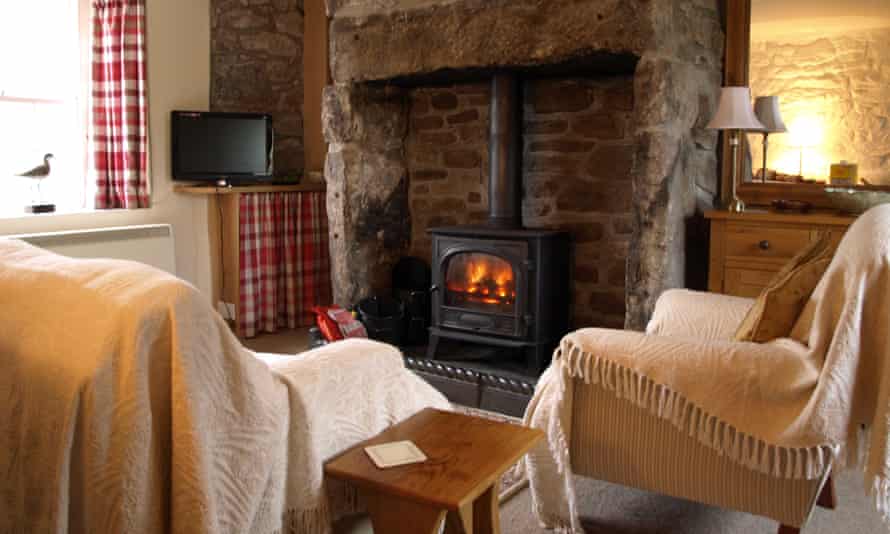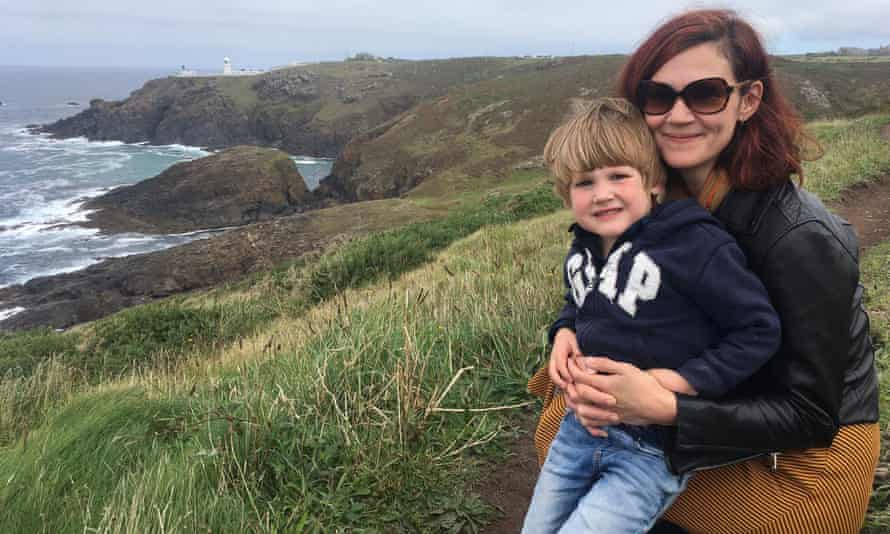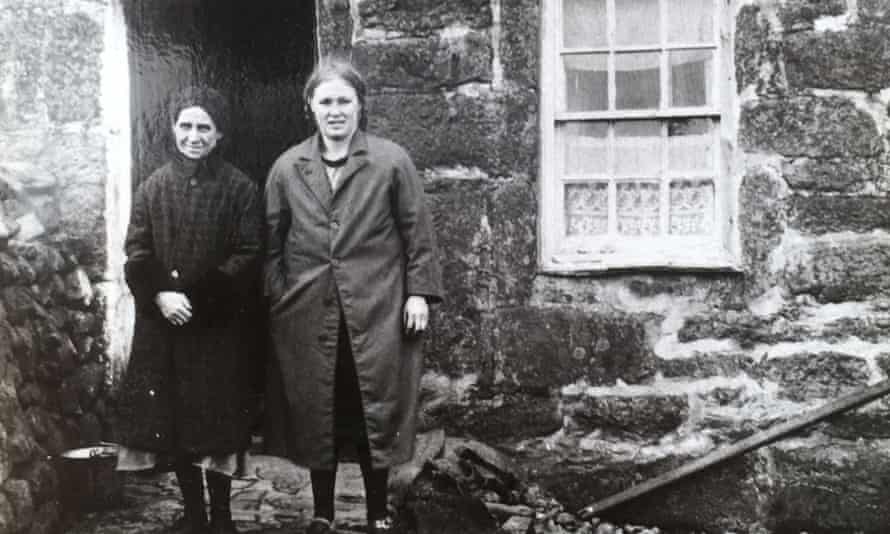A tiny miner’s cottage with an ancient-sounding name loomed large during my suburban childhood. My father was born in Bojewyan Stennack (pronounced Bow-jeew-yurn Sten-arrrr-k), a granite one-up, one-down in Cornwall, at the close of the second world war. His mother, Virginia, grew up here, steps from the foaming Atlantic coast, with her seven brothers and sisters and a mother who spent her life in widows’ blacks. I knew, from family folklore, that Bojewyan’s sash windows wheezed in a sou’westerly and that the chimney of the blackened hearth sang a haunting, almost human note. I knew about the ocean fogs, which obscured feet and montbretia-dotted hedges and made the lighthouse’s lamp, visible from the upstairs back window, glow a spectral white.
It was with these inherited memories that I stepped across the threshold of Bojewyan, my family’s home for a century until 1946, and now a holiday let. Several of the cottages on this original terrace of 20 dwellings in Pendeen, just west of Penzance, are now holiday rentals, with woodburners in the old granite fireplaces and gardens, where pit boots once swung, turned into sun-trap terraces.

I discovered the cottages’ fate in 2020 when, like the estimated 250,000 Britons gripped by a lockdown genealogy craze, I set about researching my family history. It was a discovery that conjured mixed feelings: was it distasteful that Cornwall’s mining heritage had been turned into a tourist experience? Or was it, rather, a rare opportunity? What might it add to a blustery coastal walk if my partner and I and our young son could return home to warm our toes by the fireplace where my grandmother was fifth in line for a soak in the tin bath; or if we could drink our morning cuppas in the bright white coastal light she rose to as a young girl?
Brian Donovan, an expert with online genealogy platform Find My Past, says that I’m not the first to have had this idea. Living history getaways have witnessed a growth in popularity in recent years, inspired by genealogy programmes that focus on social history through the lives of a home’s residents, such as BBC Two hit A House Through Time, Phil Spencer’s History of Britain in 100 Homes and If Walls Could Talk: the History of the Home with Lucy Worsley.
Donovan, who specialises in British and Irish records, often receives inquiries from Brits interested in the family homes of their Irish ancestors, and some are fortunate enough to find a B&B now occupying their family’s thatched 18th-century teachín.

“People with rural-dwelling ancestors can be disappointed, as simple, mud cottages often don’t survive,” he says, adding that Brits with relatives who migrated to the cities of the Industrial Revolution, such as Manchester, with its ranks of sturdy, stone-built workers’ terraces, have better luck.
“The former homes of our ancestors may not be the ideal we envisage,” warns Melanie Backe-Hansen, co-author of A House Through Time (with David Olusoga). “They could have been labourers’ cottages with no amenities, or slum housing that no longer exists. This is interesting for understanding the past, though it may not make for a dream getaway.”
But even if there’s not a holiday cottage or B&B that once belonged to your greats, people are likely to find a pub they could well have frequented, schools they attended, or churches where they were baptised or married, Donovan notes. “It’s also worth pointing out that the excellent 19th-century directories (especially the Bassett’s) also list the pubs, schools, churches, etc in a locality, most of which shall still be there to visit and might inspire a holiday.”
So while those with cash to splash could commission a genealogical tour provider to arrange a stay in former family members’ homes that have been reborn as holiday properties (ancestralfootsteps.com’s packages start at £5,000), with a little detective work many of us can seek out properties with links to our ancestors via consumer genealogy sites at a fraction of the cost. As well as FindMyPast, sites such as ancestry.co.uk are a good place to start, along with historical maps, the National Archives and undersung local archives in the regions our families hail from. FindMyPast has a new feature that allows users to search census records by address, while Ancestry’s app even shows people their proximity to properties with family links using a GPS map function.

Happily, my Cornish forebears’ cottage still has its original proportions: a two-room dwelling with a wooden central staircase, four windows and a front door opening into the main living space, apart from a modest back yard bathroom and kitchen extension. Its granite stonework is painted white and it’s cosily fitted out (with the central heating and soft furnishings my grandmother wouldn’t have known), yet strikingly minuscule for a family of nine.
Where, I wondered, would the bodies have arranged themselves? Would they have been able to sit down at the same time, even with the men of the family spending daylight hours down Geevor, the vast village tin mine? The realisation that the lives I’d romanticised as a child must have been gruelling and chilly made me a little guilty as I enjoyed a morning power shower with a handmade Cornish lavender body scrub. “Do you want me to set up a bucket loo in the garden for a genuine 1880s experience?” my partner Tim offered, when I raised this (only half-jokingly).
On our last day at Pendeen we walked down to Portheras, a cove known for its craggy coastal beauty and the rip currents churning beneath its bay. It was here that my grandmother and her siblings would come after school, picking down the rock face in the hope of finding bounties from ships wrecked off the Pendeen headland. In 1938, I was told, Virginia and her brother Leonard found a haul of claret, and buried several bottles in the seagrasses above the cove for later Trembaths to find, a crop of Alexanders (horse parsley) marking the spot.

On our way back from Portheras we pass the Radjel – the old miners’ pub where heads still swivel at the sight of an “up-country” visitor – an incongruous Portuguese cafe and the village store, where a local tells me that the old Bojewyan cottages were condemned in the late 20th century, their gardens overgrown and their windows smashed, giving them the impression of gouged-out eye sockets. They were saved by a 1973 Historic England listing, and now sell for the price of a London flat. “It’s good they did something with them,” the bobble-hatted local concludes.
We didn’t find those buried bottles of claret. My brother suspects that my late father found them when he was a student in the 1960s and that he sat on the headland, downing them by the scruff of the bottleneck. I did, however, find something precious: an insight into the lived reality of my Cornish family – its meanness, but also its magic. “There’s something about the seagull’s cry in the salt breeze,” my gran wrote in her 1942 diary, when she was stationed for war work in a nursery for London evacuees in East Sussex, and homesick for the Cornish coast. You know what, Virginia, there really is.




